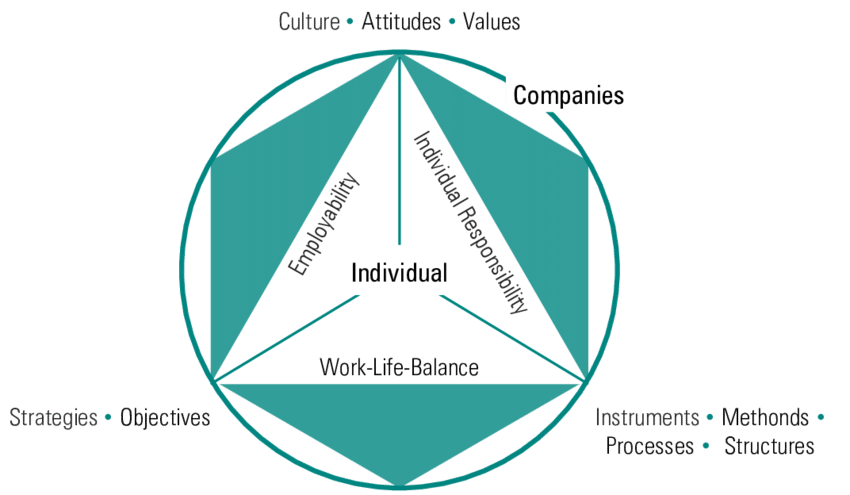Carving your words into an article takes a lot of baby steps, starting from planning, thinking, adding, deleting, modifying multiple times and finally submitting it. We are glad sharing that one of our Professor Dr. Anju Kumar has successfully written an article that talks about HRM.
Let’s see the valuable insights got from this article…
Introduction:
The novel approach to managing people with a focus on long term Human Resource development, renewal and regeneration is known as sustainable HRM. It is an extension of strategic HRM and works on a different approach to managing people. The quality of life on our planet needs to be managed. This can be achieved by making decisions that will help sustain our immediate surroundings and environment and also by managing our emotional and physical well- being. It also refers to the social and human outcomes interrelated with the environment which contributes to the sustenance of the organization. The assumption that HR is constantly being replenished to achieve strategic objectives is another. Sustainable HRM: Sustainable HRM is understood as a cross functional discipline. The three-fold approach to sustainability focuses both on an organization’s external influences and on its internal influences. The main themes in the field of sustainable HRM are environmental management, socially responsible HRM, and turnover. It also addresses the sustainability of short-term and long-term effects on a variety of the organization’s shareholders. In other words, sustainable HRM is economically rational for companies to invest in the survival of their sources for resources if the functioning of these is endangered (Ehnert 2006) The 21st century is filled with challenges. Globalization, shifts in societal expectations, technological innovations and changing customer expectations are just a few. Ehnert et al. (2014)
asserted that besides the short-termism of performance, active engagement in renewal, regeneration and reproduction of organizations’ resources for long-term survival are also neglected. Hence, rethinking resource management including current and potential (future) human resources is essential. Incorporation of sustainability in organizations’ strategy helps the realization of corporate sustainability goals (Ehnert, 2009; Kellerman, 2010; Cohen, 2010; De Prins, 2011), particularly in the presence of increasingly challenging worldwide issues such as climate change, environmental problems, world population growth, escalation of social disparity, and poverty.
Types of Sustainable HRM:
There are four types of sustainable HRM
- Socially Responsible HRM: This would include socially responsible and economically appropriate recruitment and selection, development, deployment and exit of employees.
- Green HRM: Green HRM practices such as green hiring (e.g., recruiting employees for jobs that require green attitudes and involve green tasks), green training (e.g., offering courses that impart environmental knowledge), and green compensation (e.g., linking bonuses with the achievement of environmental goals) have been shown to have a significant impact on sustainable success
- Triple Bottom Line HRM: The focus here is on the economic, environmental, and social purposes of HRM
- Common Good HRM: In Common Good HRM, inputs would refer to using HRM competencies, skiIIs, knowledge, and attitudes, to contribute to the common good and to help solve the challenges of our time. This would also be to use HRM KSA’s for the good of the organization.
Conclusion:
Sustainability is a challenge in the current business environment. It is a strategic HR initiative needed for business in the future and long term initiative for taking forth policies for protecting both the economic and natural environments.

